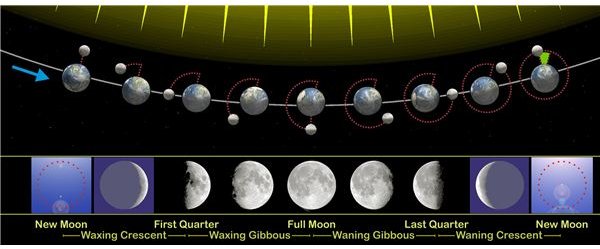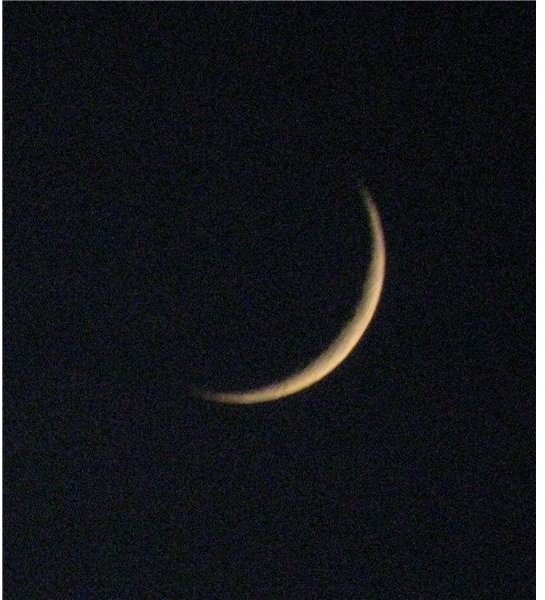Astronomy Reasons the Sun and Moon Are Seen During the Day
Daytime Astronomy
It’s no surprise that the stars are impossible to see during high noon, but some might be shocked to know that the Moon is, on some occassions, visible throughout the daytime. There are a countless number of scientific explanations for this phenomenon, ranging from the luminosity of the Sun to the albedo of the Moon. Yet, there are also a variety of simple, common sense, explanations to this daily event, some of which are as blunt as where the Moon is located in its orbit around the Earth.
Light: The Answer
One of the most important principles of astronomical viewing is light gathering ability. You no doubt have found yourself looking up into the sky on a cloudless night and noticed the hundreds of dots, big and small, in various colors, but if you’ve ever had the opportunity to do so with an instrument like a pair of binoculars or a telescope, you know how much difference it makes. The light gathering ability of the human eye is fairly standard, a lot of animals have better night vision than we humans, while some have worse. But with the aid of a telescope you can turn the dark void of the night sky into an ocean of mystical and wonderful astronomical light shows.
Why is this important and how does it translate to explaining the question, “why can you see the Sun and Moon during the day?” Because of the light. As was mentioned previously, the luminosity of the Sun, or the measure of its brightness, is a key factor in determining what is and isn’t visible in the sky during the day. Because the Sun’s apparent luminosity changes over the course of a day, different objects become visible at certain times. However, because the Moon itself is so reflective, as well as being so close to Earth, it is always visible as long as it isn’t being blocked by the glare of the Sun.
Phases: Not a Coincidence
The keen observer will note that the full Moon occurs only at night and that you’ll never see a new Moon at midnight, this is because of the phases and orbit of the Moon. The phases of the Moon are a term used to describe the position of the Moon, relative to the Sun and Earth, where the Moon shows a certain amount of its reflected light to the Earth. What this means is that, as the Moon orbits the Earth, it exposes different portions of its body to the light from the Sun and reflects that light to observers on the Earth. When the Moon is halfway through an orbit of the Earth it will appear as a quarter Moon, with one half lit up by the light of the Sun and the other half dark. This appearance alters precisely with the position of the Moon around the Earth.

When the Moon appears in the daytime, it means that it’s at the stage of its orbit where it is closer to the Sun than the Earth. While the Sun is incredibly bright, it’s overall brightness isn’t enough to completely wash out the Moon during the daytime, that is, when the Moon isn’t too close to the Sun in the sky.
The difference between a new and full Moon is which side of the Earth, relative to the Sun, it’s on. When the Moon is full, all of the light from the Sun will be reflected off the Moon and be visible to Earth, but when the Moon is new, none of that light is visible because the Moon is between the Earth and the Sun. Consequently, even when the Moon isn’t exactly between the Earth and Sun, it still isn’t visible, unless it’s eclipsing the Sun. This is because of the glare of the Sun which washes out the minimal light being reflected from the Moon.
Viewing the Moon During the Day
Anyone wishing to know when the Moon can be seen during the day need only check a handy phase calendar. Because the Moon’s orbit is so steady it’s easy to calculate where in it’s orbit it will be and when. If one wishes to view the Moon during the day, it will most often be during the waxing (growing) crescent and gibbous phases or the waning (shrinking) gibbous and crescent phases. These phases are the points when the Moon is far enough from the Sun in the sky to avoid being washed out by the glare, but still closer to it in the orbit around the Earth so that it will appear to rise above the horizon before the Sun sets, or soon after, while it’s still light out.

However, that’s not to say one can’t view the Moon during the daytime during the earliest and latest phases of it’s orbit. In fact, anyone who has ever seen a total solar eclipse will no doubt tell of the spectacle of seeing the black orb of the Moon cross in front of the Sun during the daytime. Though, these events tend to be incredibly rare and vary in their location of visibility. But anyone can catch a glimpse of a new Moon if they’re lucky enough to have the right viewing conditions. While it’s not possible to see when the Sun is still up, if an observer scans the horizon just after sunset, they may be graced with the sight of a tiny sliver that is the new Moon, when less than 5% of its surface is reflecting light on the Earth.
Additional Information
Sources
The Moon During the Day - NASA
Phases of the Moon - MoonConnection.com
Images
Phases of the Moon - (Supplied by Orion 8 at Wikimedia Commons; Public Domain; https://en.wikipedia.org/wiki/File:Moon_phases_en.jpg)
New Moon - Provided by Author, Authorized Use Required